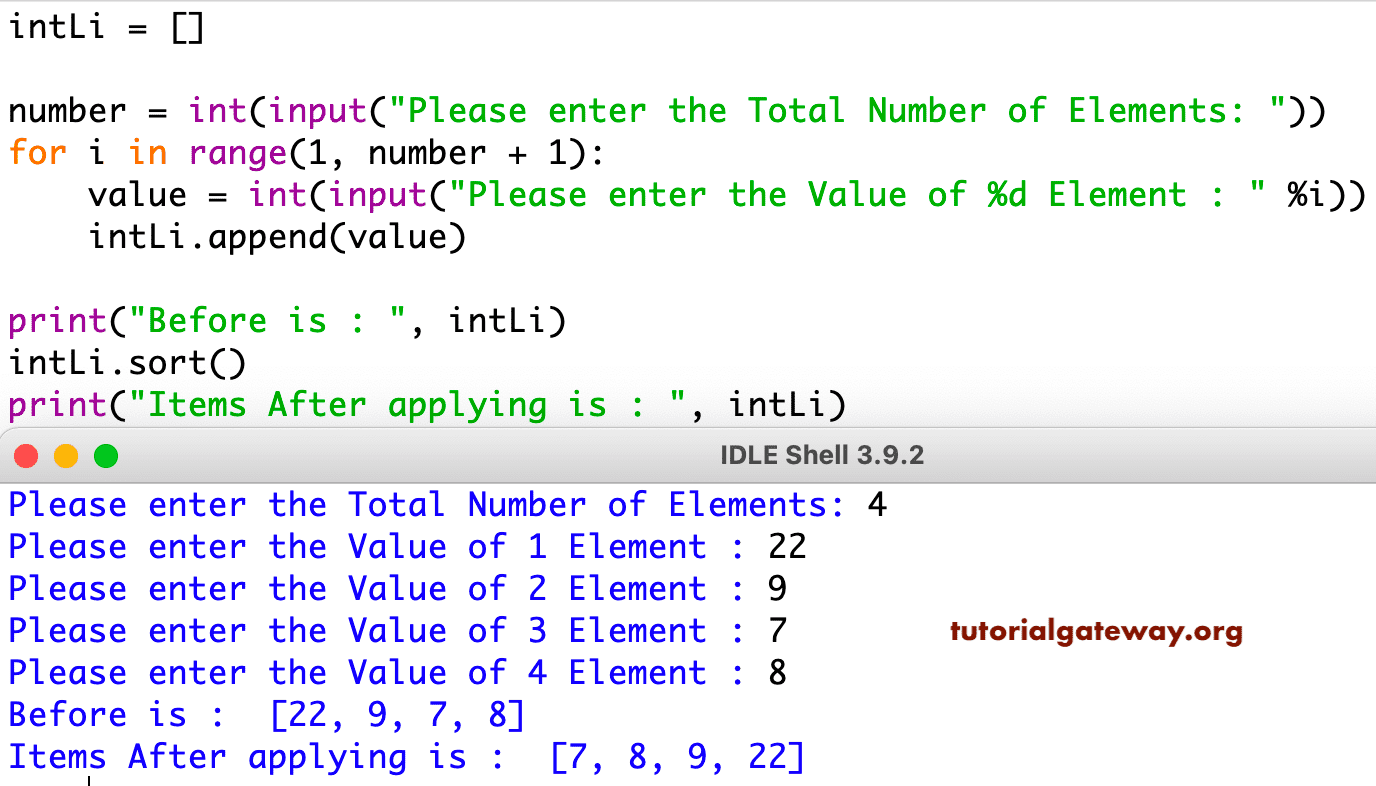

→ sort by string length & standard sort is applied for the same length, same result as above Changing the key to a length comparison: sorted(string_numbers, key=len) → numerical order, same result as the numerical sort of a list of integersĢ.

Scholarship = string_numbers = ĭefault sort: sorted(scholarship) By using reverse=True we reverse the list. The default value is False which means sorting in ascending order. The key is a function like len, int, str.lower that serves as key for the comparison. Syntax sorted(list, key=…, reverse=…) or list.sort(key=…, reverse=…) The sort methods do not require any mandatory parameters but they offer two optional parameters.

The difference between these two implementations is that list.sort() rearranges the original list while s orted(list) returns a new list. The sorting algorithm is implemented as list.sort() or sorted(list). Its worst-case and average complexity is O(n log n), but the best-case performance is O(n). For smaller runs (up to a minimum run size of 64) Timsort internally picks insertion sort, otherwise merge sort is being used. The Python way is a hybrid sorting algorithm which is derived from merge and insertion sort. Step 3 repeat Step 2 until done 3.1 -> // 3 needed repositionģ. Step 2 merge and sort equal pairs 2.1 ->, // 6 and 4 needed to swap places Step 1 split list 1.1 ->, // split in equal parts 1.2 ->, ,, // split in equal atomic parts We’ll use the same list of numbers for the explanation: numbers = Basically, it divides a list into equal parts until only atomic values remain, then merges them in a sorted manner. Merge sort uses the divide and conquer technique. Step 4 compare 6 and 10 4.1 -> // correct order already present 4.2 -> // 6 > 4 -> no reevaluation needed Step 3 compare 4 and 3 3.1 -> // 4 and 3 needed to swap places 3.2 -> // 3 no reevaluation needed Step 2 compare 6 and 3 2.1 ->, // 6 and 3 needed to swap places 2.2 -> // 3 reevaluate the sorted list Step 1 Compare 6 and 4 1.1 -> // 6 and 4 needed to swap places 1.2 -> // 4 is now part of the sorted list In the examples, the first array represents the sorted list while the second array still needs to be sorted. We’ll use the following list of numbers for the explanation: numbers =. This can reduce the size of the already sorted sublist if necessary. The result of the new value pair comparison backtracks the sorted list values until it finds its correct place. Then each further value pair repeats the same process. The lower value is added to the sorted sublist. With the insert algorithm, we start out comparing the first two values. Its average and worst-case complexity is O(n²).

The insertion algorithm uses an in-place comparison-based technique.
PYTHON 3 SORT LIST STACK OVERFLOW HOW TO
The subsequent pages will show how it works, how to use it and how to alter the results, based on special requirements or preferences. In order to achieve this while working with the wonderful programming language Python, we will use the sort function. While the theory behind these algorithms can get really complex, we are going to keep the examples rather simple. They allow us to change data structure in many different ways. Algorithms are a method that turns a given input into the desired output.


 0 kommentar(er)
0 kommentar(er)
